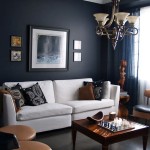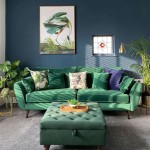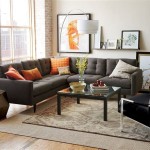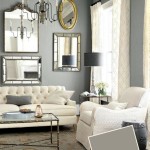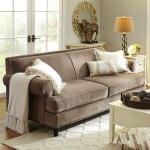Choosing the Right Color to Paint Your Living Room
Selecting a paint color for a living room is a significant decision, influencing the ambiance and perceived size of the space. The living room often serves as a central gathering place, demanding a color scheme that is both aesthetically pleasing and functionally appropriate. The process involves examining various factors, from existing furniture and lighting conditions to personal preferences and the desired psychological effects of different hues.
The impact of color extends beyond mere visual appeal. Colors can evoke emotions, create a sense of calm or energy, and even affect how a room feels in terms of temperature. A well-chosen color palette can enhance the architectural features of a living room while also concealing imperfections. Therefore, a thorough understanding of color theory and its practical application is essential for achieving a successful outcome.
Before making a final decision, it is crucial to consider the long-term implications of the chosen color. Painting is a time-consuming and potentially costly endeavor, so selecting a color that will remain appealing for years to come is a prudent approach. This involves considering trends, but also prioritizing personal preferences and ensuring the color complements the overall style of the home.
Understanding the Color Wheel and Its Application
The color wheel, a visual representation of colors arranged according to their chromatic relationship, is a fundamental tool for interior design. It categorizes colors into three primary types: primary, secondary, and tertiary. Primary colors (red, yellow, and blue) are the foundation upon which all other colors are built. Secondary colors (green, orange, and purple) are created by mixing two primary colors. Tertiary colors are formed by mixing a primary color with a neighboring secondary color, resulting in hues like blue-green or red-orange.
From the color wheel, designers derive various color schemes, each offering a distinct aesthetic. Complementary color schemes utilize colors opposite each other on the wheel, such as blue and orange. This combination creates a high level of contrast, resulting in a vibrant and dynamic look. Analogous color schemes, on the other hand, employ colors that are adjacent to each other on the wheel, such as blue, blue-green, and green. This creates a harmonious and calming effect.
Monochromatic color schemes involve variations of a single color, using different tints, tones, and shades. For example, a living room could feature various shades of gray, ranging from light silver to deep charcoal. This approach can create a sophisticated and unified look. Triadic color schemes utilize three colors that are equally spaced on the color wheel, such as red, yellow, and blue. This scheme can be bold and energetic, but requires careful balancing to avoid overwhelming the space.
The application of the color wheel extends beyond simply selecting colors. It also assists in understanding the psychological effects of different hues. Warm colors, such as red, orange, and yellow, tend to be stimulating and energizing, while cool colors, such as blue, green, and purple, are generally perceived as calming and relaxing. The intensity of a color also plays a role in its psychological impact. Bright, saturated colors are more stimulating than muted, desaturated colors.
For example, a living room intended for relaxation might benefit from a cool, analogous color scheme, featuring shades of blue and green. Conversely, a living room designed for social gatherings might benefit from a warmer, complementary color scheme, incorporating elements of red and orange. The specific application of color theory will depend on the individual needs and preferences of the homeowner.
Considering Lighting Conditions and Room Size
The amount and type of natural light in a living room significantly influence how a paint color appears. Rooms with abundant natural light can generally accommodate a wider range of colors, including darker shades, without feeling claustrophobic. However, in rooms with limited natural light, lighter colors are often preferable, as they reflect light and create a brighter, more open atmosphere.
Artificial lighting also plays a critical role in color perception. Incandescent lighting tends to cast a warm, yellow glow, which can alter the appearance of colors, particularly blues and greens. Fluorescent lighting, on the other hand, often casts a cooler, bluer light, which can make warm colors appear duller. LED lighting is available in a range of color temperatures, offering greater control over the overall lighting ambiance.
Before committing to a specific paint color, it is advisable to test it in the living room under different lighting conditions. Paint small swatches of the color on various walls and observe how they appear throughout the day and evening. This will provide a more accurate representation of the color's final appearance than simply viewing a sample in a store.
The size of the living room is another important factor to consider. In smaller rooms, lighter colors can help to create the illusion of spaciousness. Darker colors, while potentially dramatic, can make a small room feel even smaller and more enclosed. However, this effect can be mitigated by incorporating lighter accents and ensuring adequate lighting.
In larger living rooms, the color choices are generally more flexible. Darker colors can be used to create a sense of intimacy and coziness, while lighter colors can enhance the feeling of spaciousness and airiness. The architectural features of the room, such as high ceilings or large windows, should also be taken into account when selecting a color palette.
For instance, a large living room with high ceilings might benefit from a darker color on the walls to visually lower the ceiling and create a more intimate atmosphere. Conversely, a small living room with low ceilings might benefit from a lighter color on the walls and ceiling to create the illusion of height and spaciousness.
Exploring Popular Color Trends and Classic Choices
While personal preference should always be the primary consideration, staying informed about current color trends can provide inspiration and guidance. In recent years, there has been a growing trend towards neutral colors, such as grays, beiges, and off-whites. These colors offer a versatile backdrop for furniture and accessories, and they can be easily updated with seasonal accents.
Gray has become particularly popular as a wall color, offering a sophisticated and modern alternative to traditional beige. Gray can range from warm grays with subtle brown undertones to cool grays with slight blue undertones. The specific shade of gray should be chosen to complement the existing furniture and lighting conditions.
Beige remains a classic choice for living room walls, offering a warm and inviting ambiance. Beige can range from light, creamy shades to deeper, more saturated tones. It is important to select a beige that complements the other colors in the room, avoiding shades that appear too yellow or too brown.
Off-white colors, such as ivory and cream, provide a soft and elegant backdrop for a living room. These colors reflect light well, making them ideal for rooms with limited natural light. Off-white colors can be paired with a variety of accent colors, allowing for a flexible and customizable design.
In addition to neutrals, bolder colors are also gaining popularity in living rooms. Deep blues, greens, and even purples can create a dramatic and sophisticated look. However, it is important to use these colors judiciously, balancing them with lighter accents to avoid overwhelming the space.
Ultimately, the best color choice for a living room will depend on the individual homeowner's taste and lifestyle. While trends can provide inspiration, it is important to select a color that is personally appealing and that will create a comfortable and inviting atmosphere. Sampling several paint colors on walls before making a final decision is the most certain way to confirm that a desired result.

Dulux Living Room Paint Colours

Dulux Living Room Paint Colours
The Best Paint Colors For Living Rooms In 2024

How To Use Bold Paint Colors In Your Living Room

Living Room Paint Colors The Home

Dulux Living Room Paint Colours

8 Vibrant Living Room Paint Color Ideas Dumpsters Com

30 Living Room Color Ideas Best Paint Decor Colors For Rooms
:strip_icc()/cdn.cliqueinc.com__cache__posts__261477__small-living-room-paint-colors-261477-1529967324273-image.700x0c-563c056474ce48d2a6cdef2f33e5a648.jpg?strip=all)
10 Best Paint Colors For Small Living Rooms

50 Popular Living Room Colors Paint Ideas

